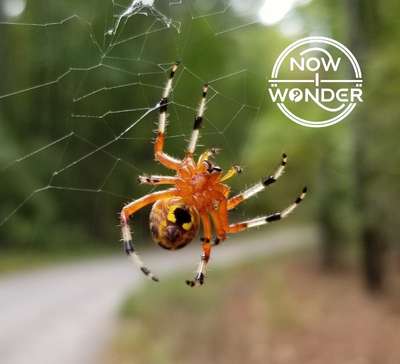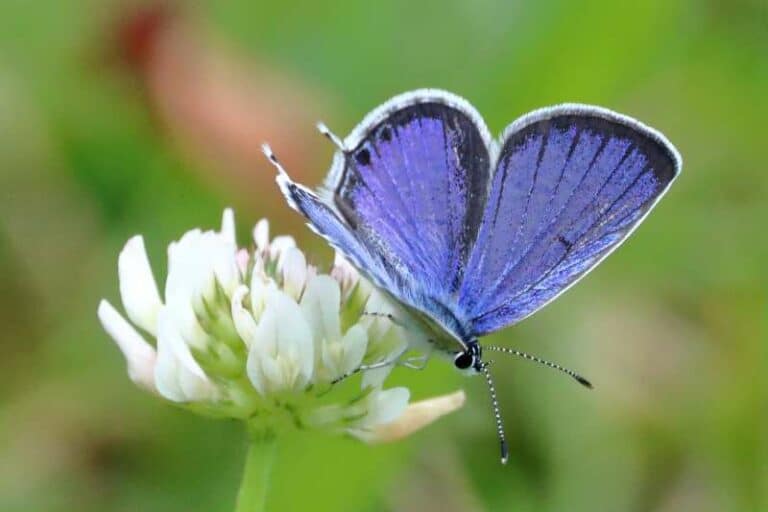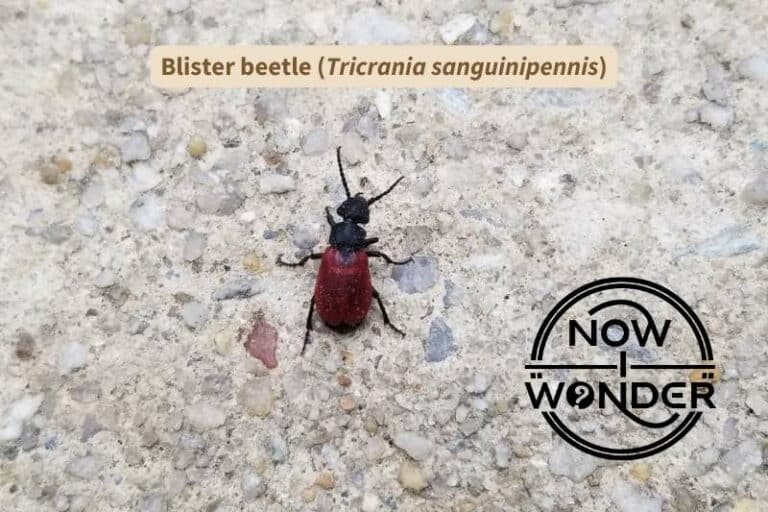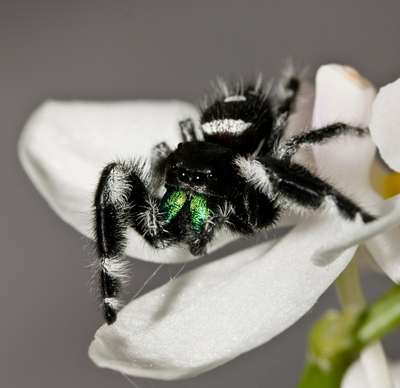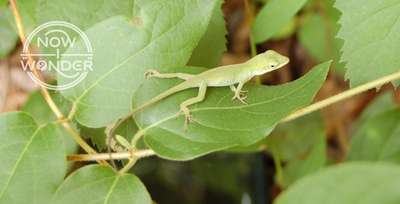Japanese Beetles are major pests in the United States, resulting in huge losses every year due to the damage these insects do to plants upon which they feed. Many people struggle to protect their plants from these abundant and voracious insects and wonder what creatures eat them. If you wonder this too, this post can help.
Ants, raccoons, skunks, opossums, moles, and shrews are the primary predators of Japanese Beetle eggs and larvae in the United States. Birds like crows, starlings, and grackles are the primary predators of adult beetles, with some contribution from orb-weaving spiders and predatory insects.
At first glance, such a lengthy list of predators would imply that Japanese Beetles are easy to control. Unfortunately, this is not the case, at least in the United States. These insects continue to expand their range and cause widespread damage. Read on to learn more about the relationships between Japanese Beetles and their predators and why the predators have yet to successfully control them.

Summary of Japanese beetle predators
| Name | Family | Type of animal |
| Ants | Formicidae | Insect |
| Starlings | Sturnidae | Bird |
| Crows | Corvidae | Bird |
| Grackles | Laridae | Bird |
| Moles | Talpidae | Mammal |
| Shrews | Soricidae | Mammal |
| Skunks | Mustelidae | Mammal |
| Raccoons | Procyonidae | Mammal |
| Armadillos | Dasypodidae | Mammal |
| Opossums | Didelphidae | Mammal |
| Parasitoid wasps | Tiphiidae | Insect |
| Tachinid fly | Tachinidae | Insect |
| Parasitic roundworm | Steinernematidae | Nematode |
| American robins | Muscicapidae | Bird |
| Catbirds | Mimidae | Bird |
| Cardinals | Emberizidae | Bird |
| Blue jays | Corvidae | Bird |
| Canadian geese | Anatidae | Bird |
| Ducks | Anatidae | Bird |
| Chickens | Phasianidae | Domesticated bird |
| Assassin bugs | Reduviidae | Insect |
| Praying mantises | Mantidae | Insect |
| Orb-weaving spiders | Araneidae | Arachnid |
| Dragonflies | Anisoptera | Insect |
What eats Japanese Beetle larvae?
Ants, moles, skunks, raccoons, opossums, and ground-feeding insectivorous birds all eat the Japanese Beetle eggs and larvae (otherwise known as grubs) that live underground.
Moles are mammals that live underground and have keen senses of hearing and touch. They also sense vibrations through the soil with their whiskers. Even though beetle grubs are tiny, moles can zero in on their locations using the tiny movements they make as they feed on plant roots. The moles use the noise and vibrations to tunnel their way through the soil to the grubs.
Other predators such as raccoons, opossums and skunks hunt the larvae from above. These nocturnal predators dig into the earth to find the grubs.
However, while they undoubtedly consume large number of grubs, these predators can cause problems of their own.
Moles cause damage of their own by disturbing the soil from below. Their subsurface tunneling humps the soil into long tracks and the deeper burrowing makes cone-shaped molehills so they are often considered unwelcome pests in their own right.
Raccoons, opossums and skunks make large holes in the grassy areas where they forage for food and cause additional damage to plants.
All interfere with the smooth grassy lawn that homeowners and golf courses strive for so are not welcome solutions for Japanese Beetle control.
Ground-feeding birds like crows, starlings, grackles and American robins also eat Japanese Beetle larvae and don’t disturb the grass or soil to the extent that the previous predators do. They probe or scratch the soil to find the grubs instead of digging down or tunneling below the surface.
Additionally, two species of parasitoid wasps were introduced to the United States to control Japanese Beetles and attack the grubs.
Tiphia vernalis is a species of parasitoid wasp that parasitizes grubs that over-wintered from the previous season while Tiphia popilliavora attacks larvae in the late summer. (Potter and Held, 2002)
What eats adult Japanese Beetles?
Insect eating birds, like crows, starlings, grackles and blue jays eat adult Japanese Beetles during the day, while skunks, raccoons and opossums hunt them at night. An introduced species of tachinid fly, Istocheta aldrichi, attacks newly emerged adults (Potter and Held, 2002) and spiders and dragonflies are additional minor predators.
Although many of the same predators consume the adults as the larvae, their tactics change from digging and searching for it on the ground to capturing the beetles in flight or plucking them off plants.
Japanese Beetles don’t spend very much time on the ground after they pupate from larvae into their adult form.
They are strong fliers but they are large insects. This makes them easy to spot and catch, whether in mid-air or while they are feeding or mating on plants.
Japanese Beetles can also be attacked by natural enemies deliberately introduced to the continental United States by scientists trying to control their spread.
Between 1920 and 1933 entomologists with the United States Department of Agriculture introduced 49 species of natural Japanese Beetle enemies to the northeastern part of the U.S. (Potter and Held, 2002)
Unfortunately, only 3 out of the 49 species established itself in any significant way here in the United States (Potter and Held, 2002); the two parasitoid wasps already mentioned that parasitize the grubs, and the tachinid fly Istocheta aldrichi.
While ground-hunting spiders will attack Japanese Beetles that happen to crawl into their space, the majority of adult beetles fall prey to spiders after being caught in spider webs.
Orb-weaver spiders build large, elaborate webs with silk strong enough to snag and hold an adult Japanese Beetle. Once trapped in the sticky strands, the beetle is powerless against the web’s large, predatory owner.
However, orb-weavers do not actively hunt Japanese Beetles; they wait patiently until one happens to fly into their web. Therefore, they do not have a big impact on the overall number of Japanese Beetles at any given time.
Dragonflies are much faster and more agile fliers than Japanese Beetles and thus could easily hunt them. But the beetles inhabit primarily grassy and cultivated areas while dragonflies hunt mostly in wild areas around open water. Because the two insects are not often in the same location at the same time, dragonflies are not major predators of Japanese Beetles.
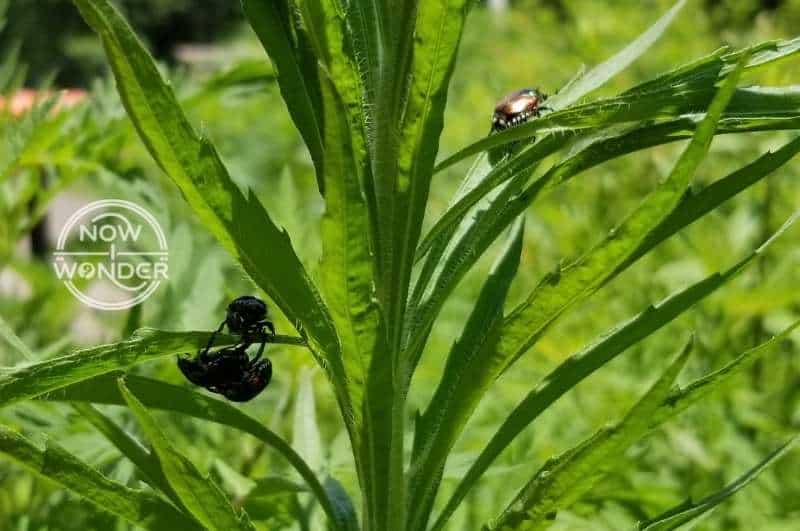
Why are Japanese Beetles still so abundant?
Japanese Beetles remain abundant because conditions support their reproductive needs, they reproduce quickly, the grubs gain protection by remaining underground, and introduced predators failed to thrive here in the United States.
Like many insects, Popillia japonica reproduces quickly, especially in supportive habitats. A female can lay 40-60 eggs in a reproductive season and the sex ratio of larvae is about 1:1 (Regniere et al, 1981), which ensures a high numbers of males and females who will mate and create fertilized eggs. With the possible exception of the insect predators, all the predators that attack Japanese Beetles reproduce slower than the beetles themselves.
Japanese Beetle larvae gain a lot of protection by remaining underground until adulthood. Even though there are some predators that attack the grubs as discussed above, the impact is lower on the larval population than if the larvae were above ground. This increases the number of larvae that turn into adult beetles capable of reproducing.
Japanese Beetles gain another advantage in that they are non-native invaders of the continental United States. Native predator and prey species evolve together over time in complex relationships that result in keeping the populations of both species in check.
But the Japanese Beetle left their natural predators behind in their native Japan when they arrived in the United States. The predators native to the United States take advantage of the opportunity to expand their food supply but didn’t evolve to eat the Japanese Beetle specifically.
Finally, most of the natural enemies introduced into the United States from the beetle’s native Japan failed to establish themselves in their new habitat.
The two parasitoid wasps species and the tachinid fly were the only ones to last more than a short period of time. Even after many years, they are only distributed sporadically across the northeastern United States so their ability to control or impact the overall Japanese Beetle population is poor. (Potter and Held, 2002)
The combination of all of these factors mean that the pressure exerted by even this lengthy list of predators isn’t sufficient to control the beetles’ spread.
In conclusion, Japanese Beetles remain an abundant pest, despite predation and concerted control efforts.
They were first noticed in the U.S. state of New Jersey in 1916 and have become one of the most successful biological invaders in our history. Even today – 100 plus years later and counting – the United States spends millions of dollars trying to control these insects with only moderate success.
Despite all this effort and expense, Popillia japonica continues to thrive, quietly munching away both above and below our feet.
Related Now I Wonder Posts
For more information about beetles in order Coleoptera, check out these other Now I Wonder posts:
- “What makes ladybugs and Japanese beetles different?
- June Bugs vs. Japanese Beetles: What’s the difference?
- What is the biggest beetle in North Carolina?
For information about insects in general, check out these other Now I Wonder posts:
- Do insects ever eat spiders? Part 1: Attacks from the air
- Do insects ever eat spiders? Part 2: Attacks from the ground
- Do insects have blood?
References
Potter, Daniel A. and David W. Held. 2002. “Biology and Management of the Japanese Bettle.” Annual Review of Entomology 47: 175. https://www.annualreviews.org/doi/abs/10.1146/annurev.ento.47.091201.145153
Regniere J, Rabb RL, Stinner RE. 1981. Popillia japonica: simulation of temperature-dependent development of the immatures, and prediction of adult emergence. Environ. Entomol. 10:29096 https://academic.oup.com/ee/article/10/3/290/2392528?login=true

